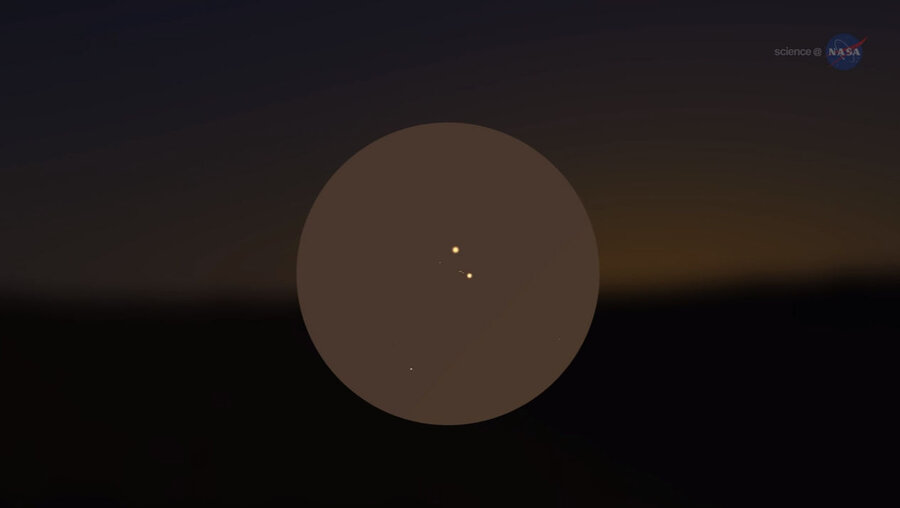How to catch the rare rendezvous of Venus and Jupiter
Loading...
Look to the western horizon just after sunset on Saturday, Aug. 27, and Venus and Jupiter will appear as close together as they will for the next half century, until November 2065.
This type of celestial event is called an "appulse" and occurs when two objects in the sky move so close together – as seen from Earth – that they reach the absolute minimum separation between two celestial objects. The view of this convergence is so dramatic than many speculate it was this type of event that was responsible for the star of Bethlehem as described in the Bible.
To see the two planets appear to converge, head to an area where the horizon is free of trees and buildings. About half an hour after sunset, the two planets will be visible about anywhere from 5 to 20 degrees above the horizon, depending how far south you are. You can estimate 10 degrees of sky by holding your fist out at arm's length, so look for the planets within two fist-widths above the western horizon.
At the same time as the Venus-Jupiter appulse, Saturn, Mercury, and Mars will also be visible in the night sky. Venus, which has phases like the moon and can sometimes appear as a crescent, will be 90 percent full in the sky, making the event even more dramatic.
Skywatchers do not need a telescope or binoculars to observe the two planets, but Venus and Jupiter will be close enough together that they'll be visible in the same field of view in either binoculars or a telescope.
The ideal place to watch this rare celestial event would be in South America, because the planets will be visible during deep twilight when the sky is darker and the contrast between the planets and the sky is greater. By the time North America is in deep twilight, the planets will have set below the western horizon.
However, even if you are not located in Guyana, Suriname, western Brazil, central and eastern Bolivia, western Paraguay, or central Argentina you can still see a great show. But if you live in an area with a lot of light pollution, it is suggested that you head to somewhere darker.
Viewers in the northern US and Canada will miss the two planets moving toward each other, as this part of the event will occur before the sun has set, but they will be able to see the single point of bright light after the sky has darkened 30 minutes after sundown, which is at 7:27 p.m. Eastern Time on Saturday.
The appulse will not be visible from the UK, except to particularly experienced observers, since it is too far north and will be visible only extremely low on the horizon. Australia will have the same problem with the added challenge of it being full daylight during the time of the event. However, in southern Europe, particularly the Iberian Peninsula, viewers will see the planets meet approximately 40 minutes after sunset.








